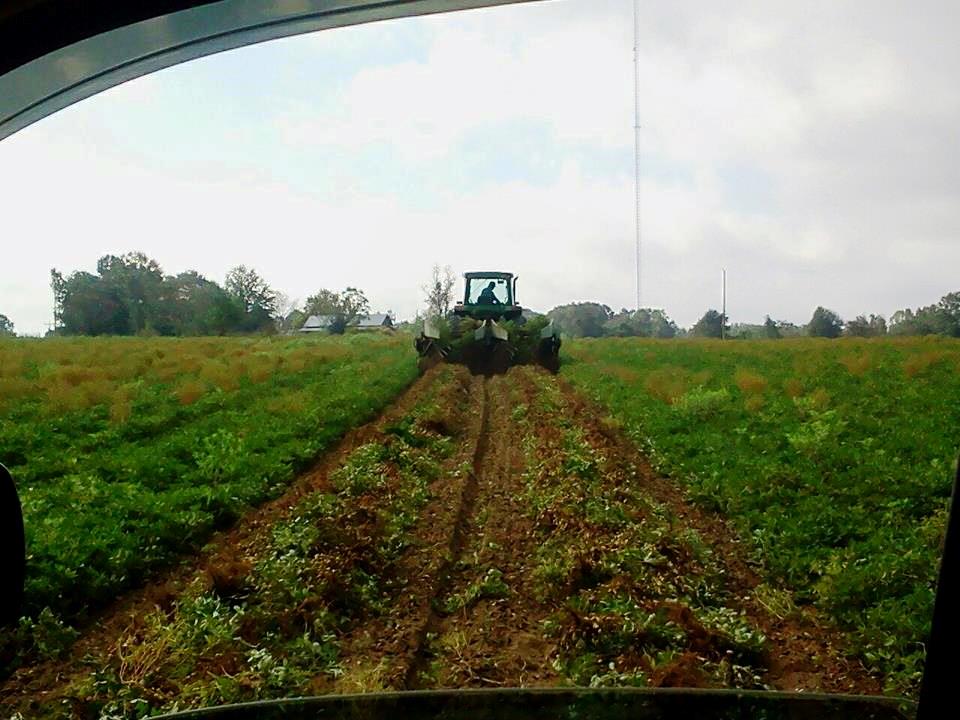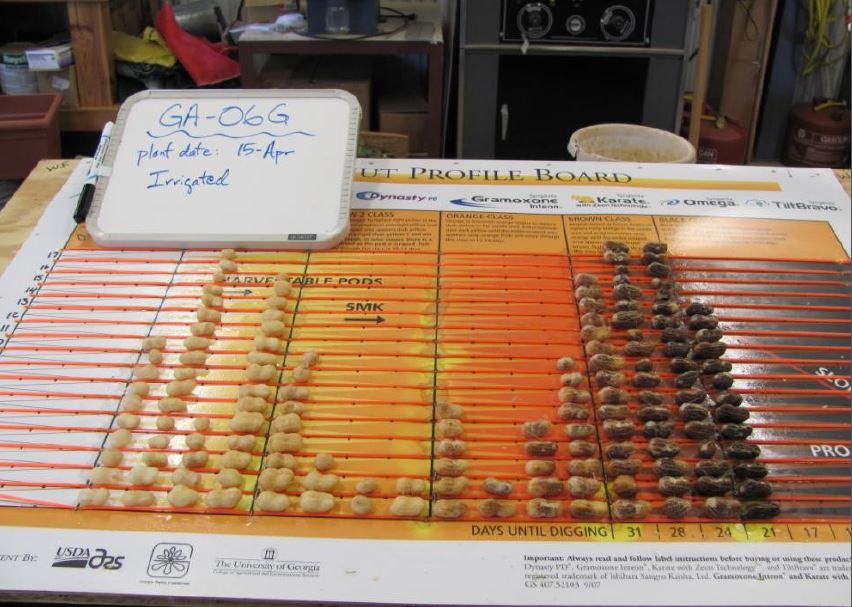As we head into August, it is not too early to begin pulling samples of peanuts to determine optimum harvest dates. With the erratic and wet growing season that we have had thus far in our peanut fields, determination of when to harvest is going to be a vitally important decision.
“Determining peanut maturity can be a difficult task if not using a standardized method to determine crop maturity. Often farmers using visual and subjective methods to determine peanut maturity experience poor grades, yield reduction and profit loss. Previous research data conducted at the University of Georgia concluded that farmers not using the peanut profile maturity chart would potentially result in yield reductions of at least 30%. Current research data suggest that the use of the peanut maturity chart profile to initiate time of harvest increases yields from 300 to 500 pounds per acre. Peanut harvest timing has become more difficult with the recent dominance of three popular peanut varieties planted in our area, primarily Georgia 06g’s, Tiftguard and Florida 07’s. Variability in on farm growing conditions whether irrigated or dryland, soil type, and the farmer’s management style add difficulty in judging ideal peanut harvest timing.” 1
Most farmers have determined peanut maturity in the past by one of three methods.
- When my neighbors start, I’ll start!
- Calendar days since planting
- Hull Scrape method
Of these three options, the hull scrape method will be the most accurate. It is important to remember that proper sampling is very important. You will need a Peanut Maturity Profile Chart, available at most Extension offices. You should pull samples from several areas in the field, avoiding unusual or problem areas. Pull off all of the peanuts from each vine that are “match head” size or larger until you reach 180-220 peanuts for your test sample. You can then proceed to hull scrape the peanuts with a pressure washer setup for podblasting . Here is a link to more information on pressure washer podblasting: http://santarosa.ifas.ufl.edu/documents/ag_podblaster.pdf. You can also use the traditional glass bead podblasters that some Extension offices still have, or a pocket knife.
It will not be surprising to see profiles such as this one pictured above due to the 20+ inches of rain in some areas. A profile such as this is going to require the farmer to make a decision as there are two crops of peanuts on this profile due to environmental, crop management, or other reasons. This profile clearly illustrates the value of doing a Peanut Maturity profile on each field.
Researchers at the USDA National Peanut Research Laboratory, University of Georgia, and Dr. Diane Rowland at the University of Florida, have also been conducting research on determining peanut maturity via Digital Imaging. This process involves hull scraping the peanuts as in the hull scrape method, but instead of laying the peanuts out on the Profile Board, you simply segregate the peanuts out by colors, place them on a simple flatbed scanner and scan the peanuts. The resulting digital image can then be analyzed to determine peanut maturity.
If you would like assistance sampling peanut maturity from your farm, contact your County Extension Agent.
1- May, L. Mitchell, Abstract of Impact Statement from Decatur Co. Georgia: http://www.caes.uga.edu/Applications/ImpactStatements/index.cfm?referenceInterface=IMPACT_STATEMENT&subInterface=detail_main&PK_ID=3603
- Wild Turkey Biology and Habitat Management - March 20, 2020
- Pond Weed Control – Common Salvinia - October 11, 2019
- Renovating Centipede Grass Infested Pastures - April 26, 2019



